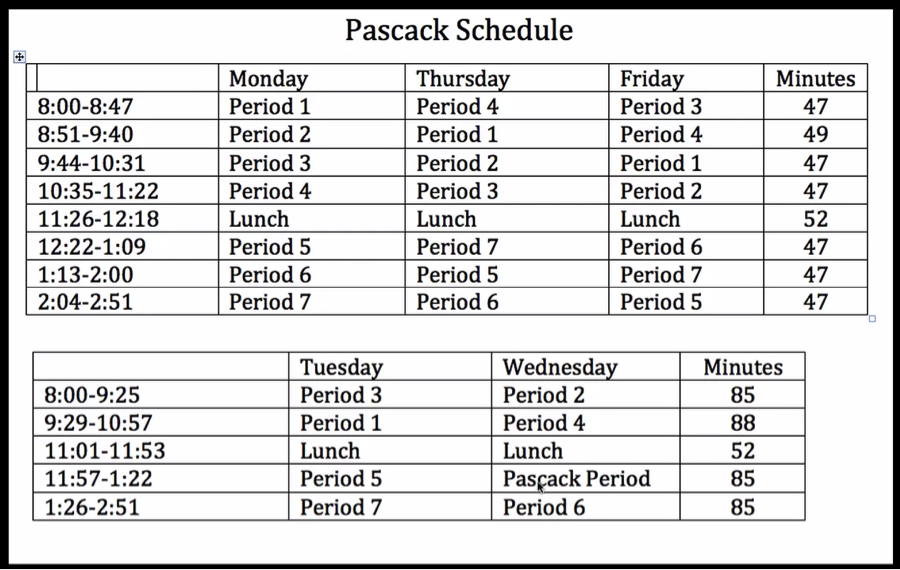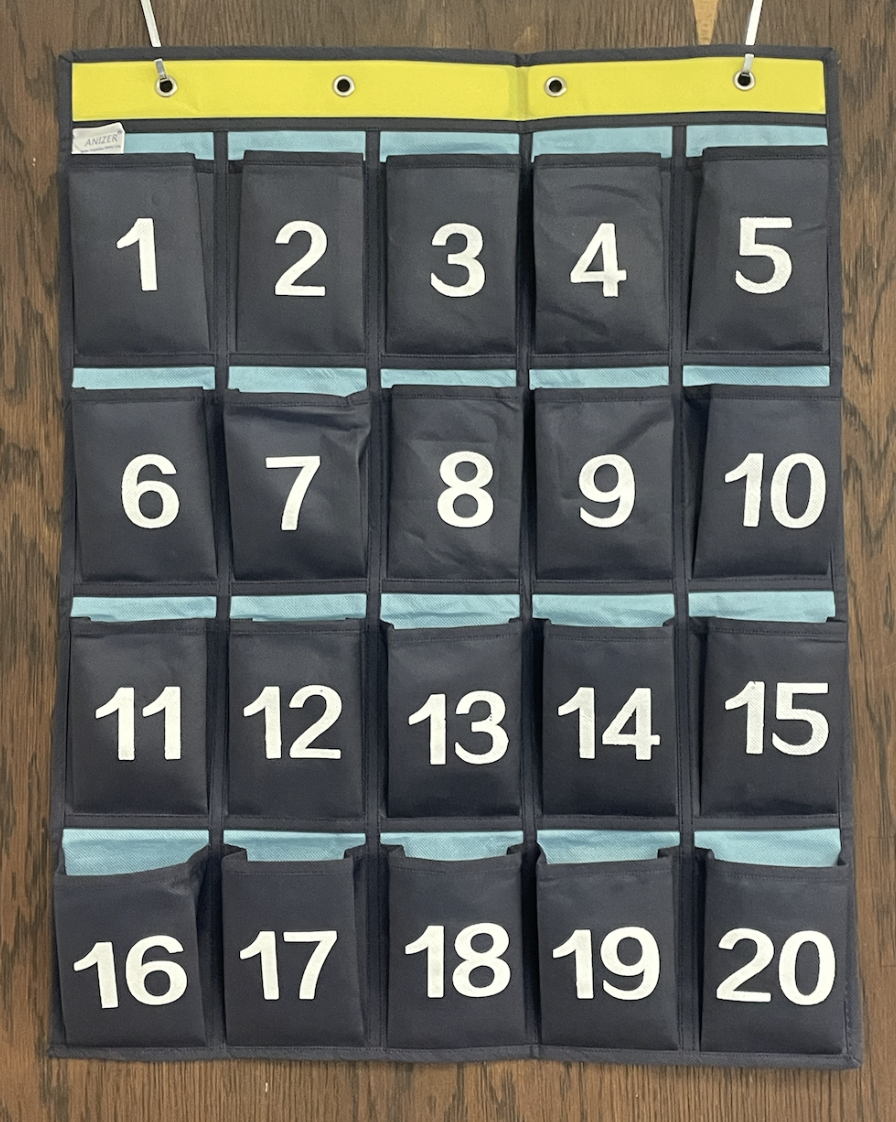The Pascack Valley Regional District has a “vision” for the 2014 to 2015 school year: The Pascack Schedule. You may ask: what is this schedule? Why is it coming to Hills? Basically, what’s all the buzz about? Well, Hills and Valley are doing something never before seen; they are trying to innovate scheduling, to revise the learning environment, to shake things up.
So, to the schedule, best explained in the image you see here. On Monday, Thursday, and Friday, classes will be 47 minutes each with a 52-minute lunch period. Everyone in the school has the same lunch period. Periods one through four rotate, as do periods five through seven. Tuesday and Wednesday have a different set-up. Lunch will still be 52 minutes, however, the other four periods of the day will be 85 minutes long. Tuesday will follow the pattern where period three is first, period one is second, and after lunch is period five, followed by period seven. Wednesday mornings will have periods two and four preceding lunch. After lunch will be the Pascack Period (more on this later) and period six.
The reason that this new schedule is coming to Hills is to create “an innovative learning environment” and meet four goals established by the Pascack Valley Regional HS District. “1) Provide more options and opportunities to allow students to explore their passions and interests through a more personalized educational experience. 2) Arrange for as many opportunities as possible for physical and mental wellness for students in regards to physical fitness, stress reduction, and healthy living. 3) Develop opportunities for instructional innovation that leads to enhanced learning. 4) Provide flexibility with administrative and assembly options to allow for a minimization of student academic interruptions.”
Students currently have many classes and electives to choose from each year; there will not be any addition of classes to choose from, or even the room in a schedule to take more choice classes. The arrangement providing for mental wellness is difficult to grasp considering that these elongated periods will most definitely test students’ attention span. What instructional innovations will teachers develop to keep kids occupied for 85 minutes? And how many assemblies per year qualify the need for dedicating 85 minutes a week so that a class wouldn’t be missed? The Pascack Schedule is an experiment that will affect students’ lives.
The Pascack Schedule surrounds the Pascack Period. The Pascack Period is an unstructured timeslot. The benefits are that students will have time to see teachers for extra help and clubs will get an opportunity to meet during school hours. The drawbacks however are very real. There will be 85 minutes per week when students are not receiving instruction. Sure, there will be students thankful for a study hall, but there will also be kids finding creative ways to escape notice and wander the school. School officials say that students will be required to check in between lunch and the Pascack Period, so as to prevent seniors from spending Wednesdays from 11 to 1:25pm off campus.
If the Pascack Period is “designed to promote independence and encourage students to engage in nontraditional educational opportunities” then confining students to one classroom where attendance will be taken defeats the purpose. The alternative would be to let kids run free. With the system of having a homeroom and then receiving permission to attend a club meeting, there would still be an element of unaccountability for students. With all clubs trying to meet during the Pascack Period, kids in multiple organizations would be torn between conflicts. And those not involved in clubs could end up sitting around for almost an hour and a half.
Lunch is another issue that arises from this new schedule. The estimated 800 students in the school will all have lunch at the same time. The cafeteria cannot accommodate 800 people (plus faculty) at one time. The solution the school has come to will be to have satellite lunch facilities. While benefits to everyone sharing a lunch would be the ability to get to know one another and everyone would have friends to eat with, a con is that by sectioning off the student body, kids won’t necessarily branch out from their predetermined groups. Another concern brought up is the exodus of driving seniors everyday. Additionally, lab time will still be taken out of lunch. Lab sciences will receive 22 extra minutes out of lunch as opposed to the status quo, which has 47 minutes per week dedicated to lab activities.
And to other students’ ideas about the Hills’ version of block scheduling, what do they think? A survey conducted by Jack Miller asked 100 Hills students “are you a fan of block scheduling?” The results of the survey were 17% yes to 61% no with other responses available from “I have not heard of Block Scheduling” (5%) to other degrees of opinions. As someone who has completed three and a half years with the current system in place, I haven’t experienced major problems with it. I see room for improvement, but the Pascack Schedule isn’t perfect either.
Parents have also spoken out about their concerns, which include the lack of structure during the Pascack Period and the lunch congestion. The main worry of parents is attention span. Some kids have a hard time focusing for our 47-minute periods now, imagine how difficult it would be to maintain concentration for 85 minutes. However, the longer classes are also the strongest aspect of the schedule. The substantial pro associated with longer periods is more time to delve into a class discussion or learning topic. While this is something that might truly enhance learning, the logistical issues associated are great. I hope that in time, the administration will be able to answer the many questions that surround the new schedule. I am certainly curious to learn more about this experimental schedule and how it affects students.











































